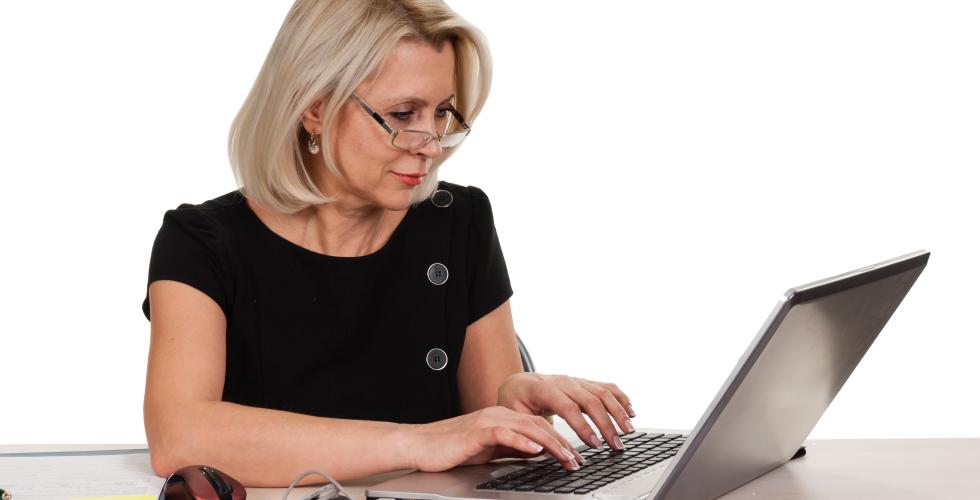Fewer publications from women researchers after COVID-19
The COVID-19 measures in place appear to affect the productivity of women researchers more than men. According to a Danish research analyst, immediate steps to reverse this trend are needed.
Not long after the directives to work from home were introduced in country after country, the first accounts of a widening gender gap in research began to surface in social media.
Journal editors pointed out that article submission rates from women had dropped dramatically. Researchers exchanged stories on how family and household obligations and the organization of a new home situation were taking up all their time and consumed the energy they would otherwise have spent on their research activities.
But was this merely anecdotal evidence or was a clear pattern emerging? Jens Peter Andersen, Senior Researcher at the Danish Centre for Studies in Research and Research Policy, is first author of a study, currently published as a preprint, analyzing publishing patterns in medical literature before and after the pandemic.
Andersen is surprised at how large the difference actually is.
“We already know there’s a gender gap in scholarly publications in medicine, so the question here was whether the gap was expanding in the wake of the pandemic. We found that the share of women as first authors has decreased by close to 23 percent. That’s much more than I’d anticipated,” he says.

Most difficult for early-career women
Andersen and his colleagues looked at published COVID-19 papers and compared the proportion of women authors of these against the proportion for all articles published in the same journals in 2019. To provide clarity, the analysis was limited to articles with at least one author with a US address.
The study estimates that women’s shares of first authorships were 23 percent lower compared with 2019, while their shares of last authorships and general representation were each 16 percent lower. According to the researchers, this supports the hypothesis that working from home has had a greater affect on the productivity of women, particularly those who are in the early stages of their career. First authors are often young researchers in recruitment positions, whereas last authorship is typically associated with supervisors or research directors.
“There is some uncertainty associated with this analysis given that the situation is still developing and we lack a lot of information. Therefore, it’s important to follow this up in a year or so when our findings will be more robust. What we’ve looked at so far are articles that have already been published.”
“But research activities are progressing all the time, and we may not register the full impact until later if women continue to have less work or laboratory time. I suspect the disparity will not be alleviated in future studies. It’s more a question of how significant the impact will turn out to be,” says Andersen.
The researchers chose to conduct an analysis at this preliminary stage, however, because it is important not to delay in implementing measures to counteract the widening gender gap.
“If you want to take action relating to gender equality it’s essential to draw attention to what’s happening as it’s happening,” says Andersen.
Scandinavia not immune
According to Andersen, the more long-term perspective shows that the disproportionate share of male authorship in academic publishing in medicine has gradually declined, although this varies substantially among specialties. The researchers broke down the results by specialty to check whether the increasing gender gap during the pandemic could be attributed to a specialty bias in an area with a high representation of men.
“Medicine differs from many other disciplines in that the time between submitting an article and its publication tends to be short. We looked at the submission and publication dates for COVID-19 papers, and they appear to be even shorter now,” he says, without wishing to speculate too much on the implications this would have in terms of the gender gap.
“Is there any reason to believe that Scandinavia will be less likely to experience the same kind of impact that you have found from the pandemic measures?”
“The results are likely to vary from country to country, depending on the measures introduced and how long they last, the general norms for dividing household responsibilities and so forth. I would guess that the impact will be somewhat less in countries like Denmark and Norway, but we should not just assume that we won’t have this problem because our societies are generally more gender-equal,” Andersen says.
At present there are no figures on how the situation has affected publication patterns among researchers in Norway.
“Important to have a discussion now”
Andersen and his colleagues are not alone in making an early effort to study the effects of the pandemic on academic productivity. Studies on articles published on a variety of different preprint platforms show the same tendencies in somewhat varying degrees.
These studies also support the finding that the impact is most pronounced for early-career researchers, which gives rise to concerns about the implications this may have for a researcher’s career down the line, and the long-term consequences for the researchers who are affected.
The key now, Andersen believes, is to apply this insight when determining what will be needed to enable employees to do their jobs in the best possible way. For example, Curt Rice, chair of the Norwegian Committee for Gender Balance and Diversity in Research and Rector of Oslo Metropolitan University, has suggested giving women priority as institutions gradually open up for the use of offices and laboratories.
There has also been a proposal to accept extra family and household obligations during this period as grounds for extending various deadlines. These are the kind of debates we should be having, according to Andersen.
“I think it’s important have a discussion now on what the right solutions are. I don’t have a solution myself, but discussing whether to give priority to those who need the offices the most is meaningful in a local context. We can’t solve everything ad hoc, but if we identify effective measures we can introduce now, then we should introduce them.”
Translated by Glenn Wells and Carol B. Eckmann.
Jens Peter Andersen is one of the researchers behind the study, Meta-Research: Is Covid-19 Amplifying the Authorship Gender Gap in the Medical Literature?, first published in May 2020 as a preprint via the open-access archive, arXiv.org.
The researchers compared the number of COVID-19 papers published in 2020 with the total number of articles published in the same journals in 2019. The names of the authors were used to determine their gender.
The percentage of female first authors in the pool of COVID-19 articles was 23 per cent lower than in the control group. The corresponding decrease in last authorships was 16 per cent.
The researchers found no evidence to support that these changes were due to a higher representation of men in the disciplines where research on COVID-19 is being conducted.
The study provides an early indication of the potential impacts of the pandemic measures for the research community.


